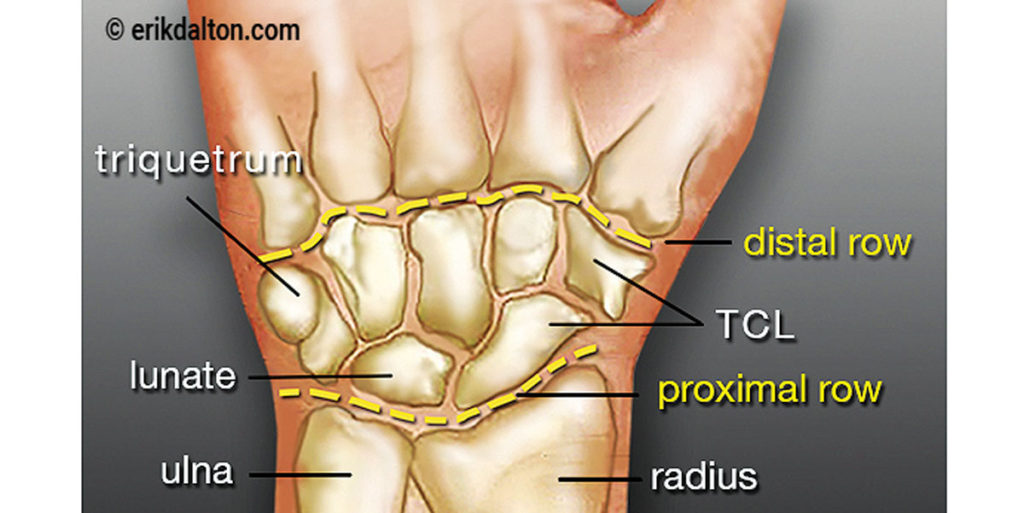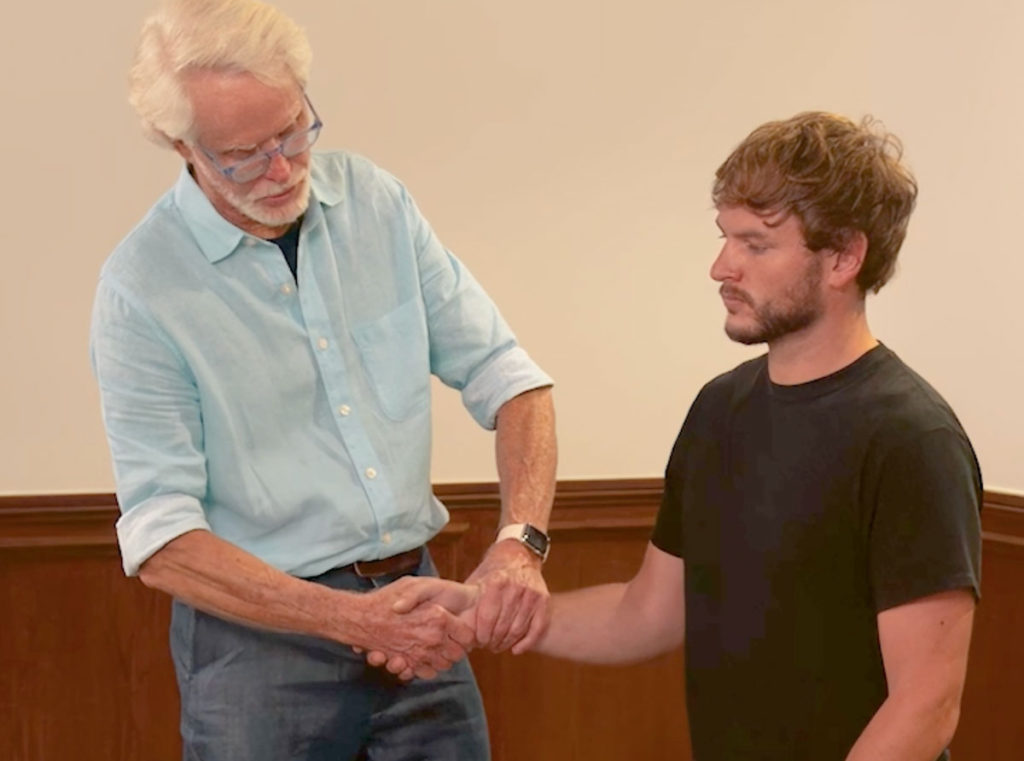Both professional and recreational athletes depend on their hands, wrists and fingers for proper strength, grip and range of motion for optimal performance. Sprains commonly occur during active sports or household falls. The severity of minor injuries is often minimized under the blanket category of a “sprain” causing clients to not seek help for their problem. Sadly, a true sprain can take weeks to heal leaving adherent scar tissue that glues bony structures and causes structural malalignments that are often difficult to fix.

Computer programmers, writers, artists, researchers, and machinists often suffer overuse syndromes familiar to most therapists such as trigger fingers, carpal tunnel and de Quervain syndromes. Traditional bodywork often focuses only on the soft tissue aspect of wrist and hand injuries when a more holistic approach may prove more successful. Restoration of proper wrist and hand biomechanics is crucial in preventing formation of secondary inflammatory responses caused by shearing forces as tendons move across malaligned bony structures.
Bracing, including wrist supports, only conforms to postural abnormalities creating further tightness resulting in capsulitis, tendinosis, loss of flexibility and function. Any bony malalignments affecting tendons crossing the wrist can lead to compensatory problems such as carpal tunnel and elbow strains such as medial and lateral epicondylitis. The Myoskeletal goal is to restore joint play and alignment to the 27 bones in the hand and wrist allowing better soft tissue glide. The use of bones as levers to mobilize fibrotic ligaments and tendons is a very effective and safe way to create joint play and relieve hand and wrist pain.

Testing Made Easy
Many tests currently exist to identify motion restricted joints but I wish to share a few I have found particularly effective for treating the most common pain generators. To assess mobility (glide) of the triquetrum and pisiform bones, ask the client to touch the tip of the little finger (5th digit) with the tip of the thumb.

Next test the ring finger (4th digit) to the thumb. Weakness in ring finger’s opposition to the thumb results from malalignment of triquetrum and lunate. Weakness in the third finger’s opposition to the thumb indicates a malalignment of the scaphoid and lunate combination; whereas, weakness of the index finger’s opposition to the thumb indicates malalignment of the scaphoid bone.
Phase two of the evaluation process requires that the client repeat each of the above tests. But this time the client holds each digit tightly to the thumb as the therapist (using moderate force) tries to separate the two. If this separation maneuver allows the circle of opposition to be broken, one should suspect a high clinical probability for bony misalignment.

Lunate and Triquetrum Alignment

With the client’s elbow and wrist slightly flexed (palm up), therapist’s right thumb glides superiorly past the pisiform until it bumps into the ulna.
By moving slightly medially—staying away from median nerve and transverse carpal ligament, the thumb contacts the proximal edge of the triquetrum and lunate. Concurrently, the left thumb glides superiorly to the scaphoid/radius junction.
Therapist extends and gently tractions the elbow while flexing the client’s wrist with the intention of driving a “wedge” between the radius/ulna and the proximal carpal row.
Holding with mild sustained anterior/inferior pressure, the client gently attempts wrist extension against therapist’s resistance to a count of five and relaxes.
Again, the therapist gently tractions the entire arm and hand while depressing the proximal row against the distal row to restore glide and joint play to all the carpals. Tough adhesions may require side to side wiggling of the arm and hand while maintaining traction.
This technique mobilizes the lunate dorsally while helping to separate scaphoid from the radius. Repeat three to five times and retest the ring fingers ability to oppose the thumb.
Mobilizing Proximal Carpal Row
Once motion has been restored to adhesive ligaments and the lunate repositioned, pronate the hand to mobilize the triquetrum, pisiform, and scaphoid.
Technique begins by grasping the client’s hand and extending the arm and wrist so the therapist’s thumbs butt up against the radius at the scaphoid-lunate junction. Therapist’s hands and hooked thumbs traction the entire arm holding a gentle sustained pressure as the client slowly attempts wrist flexion to a count of five against therapist’s resistance.
Upon relaxation, the therapist brings the wrists into more extension to restore carpal glide and bony alignment. This routine is repeated three to five times. The therapist’s thumbs then begin examining for any bony fixation along the radioulnar ridge…correcting any newly discovered bony/ligamentous fixations. Test all fingers with the ‘digit-pulling’ technique.
Handshake Assessment

The handshake technique helps determine if the carpal rows are now gliding without resistance.
Therapist’s left hand grasps the client’s forearm and his right hand holds his right hand as if shaking hands.
The client is asked to relax while the therapist glides his hand in radial and ulnar abduction while bracing the forearm.
Any resistance encountered may indicate further mobilization of the proximal row should be repeated.
Metacarpal-Phalangeal Release











